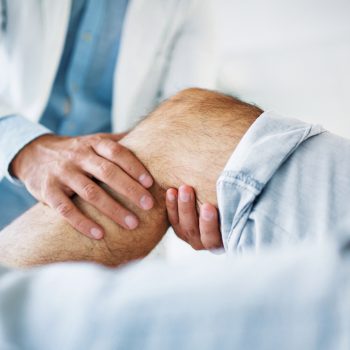Osgood-Schlatter syndrome is a benign disorder affecting the knee in pediatric age: the tuberousness of the tibia, located under the patella, is painful and swollen, especially when you are doing sports. The disorder is associated with the growth process of bone and cartilaginous tissue in that growth tends to disappear. But are there repercussions for young adults? And if so, which ones? We asked Dr. Andrea Bruno, orthopedist and traumatologist at Humanitas.
Young athletes among the most affected
Osgood-Schlatter syndrome is an osteochondrosis that affects preadolescent children aged between ten and fourteen. The prevalence is greater among males and especially among those who dedicate themselves to physical activity. Knee flexion movements, especially in young athletes frequently practicing popular sports, can cause knee pain.
The syndrome affects the anterior tibial apophysis, which is the nucleus of growth of tibial tuberosity,” explains Dr. Bruno. Symptoms are swelling and pain, often affecting only one of the legs, “without functional limitations”, the specialist adds. The soreness is induced by the tendon flexion that connects the quadriceps muscle of the thigh with the tibia, “that’s why the symptoms are felt during physical activity, such as running or jumping as well as climbing the stairs”. The syndrome tends to undergo spontaneous healing and in any case with the end of the tissue growth process, around eighteen or nineteen years of age.
Symptomatic therapy may be used if necessary: “There is no specific targeted therapy for Osgood-Schlatter syndrome. You can intervene in any case by taking painkillers, reducing, modifying or interrupting sports activity, resting and stretching the posterior muscle chain,” adds Dr. Bruno.
What about in adults?
Resolved, the syndrome does not pose any problem: “After the growth process has been completed, the syndrome regresses and does not give rise to any problems in the following years, nor does it predispose to the onset of other problems in the knee joint”.
However, if the syndrome is neglected there may be repercussions in adulthood: “Tibial tuberculosis can be fragmented after growth is over. There may still be a local calcified bone fragment that can cause tendon pain,” the expert explains.
The age is post-pubertal: “Once the growth process is over, the subject can be surgically treated. The operation consists of removing the bone fragment. A tenolysis may be performed, which is a sort of cleansing of the tendon inside the calcification,” concludes Dr. Bruno.









